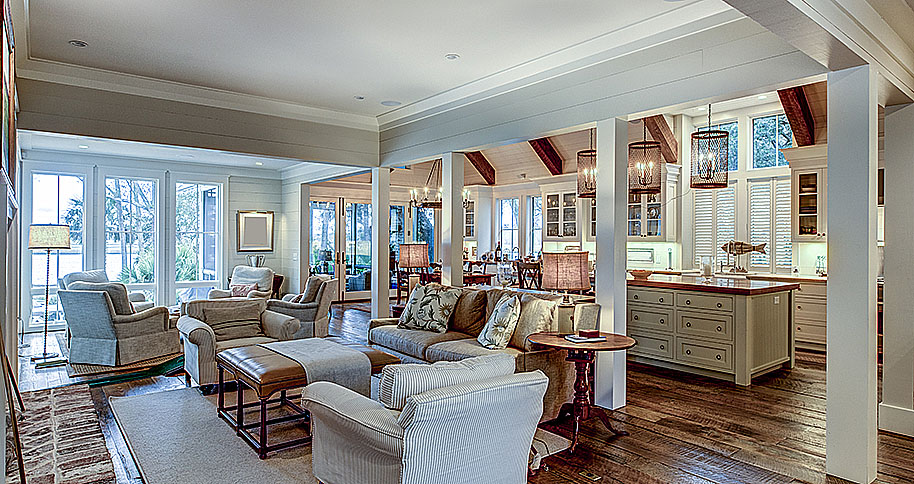When it comes to commercial remodeling one of the most important aspects to consider is how to make the best use of the available space. Space efficiency is not just about fitting more into less; it’s about creating an environment that fosters productivity, creativity, and well-being for employees.
How to Maximize Space Efficiency in Office Remodel
As businesses grow and evolve, so do their spatial needs. An office remodel presents the perfect opportunity to rethink how space is used and to optimize it for the current and future needs of the company.
Rethinking Office Layouts
The traditional office layout, with rows of cubicles and enclosed offices, is rapidly becoming outdated. In its place, more dynamic and flexible layouts are emerging, designed to accommodate the diverse needs of a modern workforce. One of the first steps in maximizing space efficiency is to rethink the office layout. This involves considering how different teams work, how much space each activity requires, and how to create zones that support different functions.
Open-plan offices have gained popularity for their ability to foster collaboration and communication. However, it’s important to strike a balance between open spaces and areas that offer privacy. Not every task or meeting requires an open space, and having designated quiet zones or private rooms can greatly enhance productivity. When planning your office remodel, think about how you can create a layout that allows for both collaboration and concentration.
Another key aspect of rethinking office layouts is the flow of movement within the space. An efficient layout should minimize wasted movement and make it easy for employees to navigate the office. This can be achieved by strategically placing common areas like break rooms and meeting rooms in central locations, making them easily accessible from all parts of the office. Consider how employees move throughout the day and design the space to support natural movement patterns.
Incorporating Multipurpose Spaces
In a quest for space efficiency, multipurpose spaces can play a significant role. These are areas that can serve multiple functions depending on the needs of the moment. For example, a large meeting room can double as a space for training sessions or workshops. A break room can also serve as an informal meeting area or a place for creative brainstorming sessions. By designing spaces that can be easily adapted to different purposes, you can make better use of the available space and avoid the need for multiple rooms dedicated to single functions.
Multipurpose spaces are particularly valuable in smaller offices where space is at a premium. They allow you to make the most of every square foot, reducing the need for separate rooms and enabling a more flexible approach to how the office is used. When designing multipurpose spaces, consider factors such as furniture that can be easily rearranged, storage solutions that can be hidden when not in use, and technology that supports different functions in the same space.
Promoting Flexibility Through Modular Furniture
Modular furniture is another effective way to maximize space efficiency in an office remodel. Unlike traditional furniture, which is often fixed and bulky, modular furniture can be easily moved, reconfigured, or expanded as needed. This flexibility allows you to adapt the office space to changing needs, whether it’s for a growing team, a new project, or a different way of working.
For example, modular desks can be rearranged to create collaborative workspaces, or separated to provide individual workstations. Modular seating can be used to create casual meeting areas or rearranged to accommodate larger gatherings. The key to successful modular furniture is choosing pieces that are versatile and durable, ensuring that they can withstand the demands of a busy office environment.
In addition to modular furniture, consider incorporating flexible workstations that can be adjusted to suit different tasks and work styles. For instance, sit-stand desks allow employees to alternate between sitting and standing throughout the day, promoting better health and well-being while also maximizing the use of vertical space. By investing in flexible and adaptable furniture, much like the approach taken by home addition companies McLean, you can create a workspace that evolves with your company’s needs.
Utilizing Vertical Space
When floor space is limited, vertical space can provide a valuable solution for maximizing efficiency. Often overlooked in office design, vertical space offers numerous opportunities for storage, organization, and even decoration. By thinking vertically, you can free up floor space and create a more open and airy environment.
One way to utilize vertical space is by installing tall storage units or shelving that reaches up to the ceiling. These can be used to store files, office supplies, or even personal items, keeping them out of the way and reducing clutter. Vertical storage solutions are especially useful in small offices where every inch of space counts. Additionally, vertical space can be used for wall-mounted desks or workstations, which can be folded away when not in use to save space.
Another way to make the most of vertical space is by incorporating elements such as whiteboards, bulletin boards, or digital displays on the walls. These can serve as tools for collaboration, communication, and organization, making it easier for employees to share ideas and stay informed. By thinking creatively about how to use vertical space, you can maximize efficiency and create a more functional and organized office environment.
Integrating Technology for Space Efficiency
Technology plays a crucial role in modern office design, and integrating it effectively can greatly enhance space efficiency. With the right technology, you can reduce the need for physical space and create a more streamlined and productive work environment. For example, cloud-based storage solutions eliminate the need for bulky filing cabinets, freeing up valuable floor space for other uses.
Video conferencing technology can reduce the need for large meeting rooms, as virtual meetings can be held from anywhere in the office. This allows you to create smaller, more versatile meeting spaces that can be used for a variety of purposes. Additionally, smart office technology, such as automated lighting and climate control, can help to reduce energy consumption and create a more comfortable and efficient workspace.
When planning your office remodel, consider how technology can be integrated to enhance space efficiency. This may involve upgrading your IT infrastructure, investing in new software or hardware, or rethinking how technology is used in the office. The goal is to create a space that supports productivity and collaboration while minimizing wasted space.
Encouraging a Culture of Space Efficiency
Maximizing space efficiency is not just about the physical design of the office; it’s also about creating a culture that values and promotes efficient use of space. This involves encouraging employees to be mindful of how they use the office and providing them with the tools and resources they need to work efficiently.
For example, you can promote a culture of space efficiency by implementing policies that encourage employees to keep their workstations tidy and organized. This can be supported by providing adequate storage solutions and making it easy for employees to access the tools and materials they need. Additionally, you can encourage flexible working arrangements, such as hot-desking or remote work, which can reduce the demand for permanent workstations and free up space for other uses.
Creating a culture of space efficiency also involves educating employees about the benefits of efficient space use and involving them in the planning and design process. By seeking input from employees and incorporating their feedback into the design, you can create a workspace that meets their needs and supports their work. This not only enhances space efficiency but also promotes employee satisfaction and engagement.
Conclusion
Maximizing space efficiency in your office remodel is about creating a versatile, productive, and employee-friendly environment that adapts to your organization’s evolving needs. By strategically rethinking layouts, incorporating flexible and multipurpose spaces, utilizing vertical storage, integrating technology, and fostering a culture of efficiency—similar to strategies used in a Condo remodel DC you can make the most of your available space and set the stage for long-term success.


